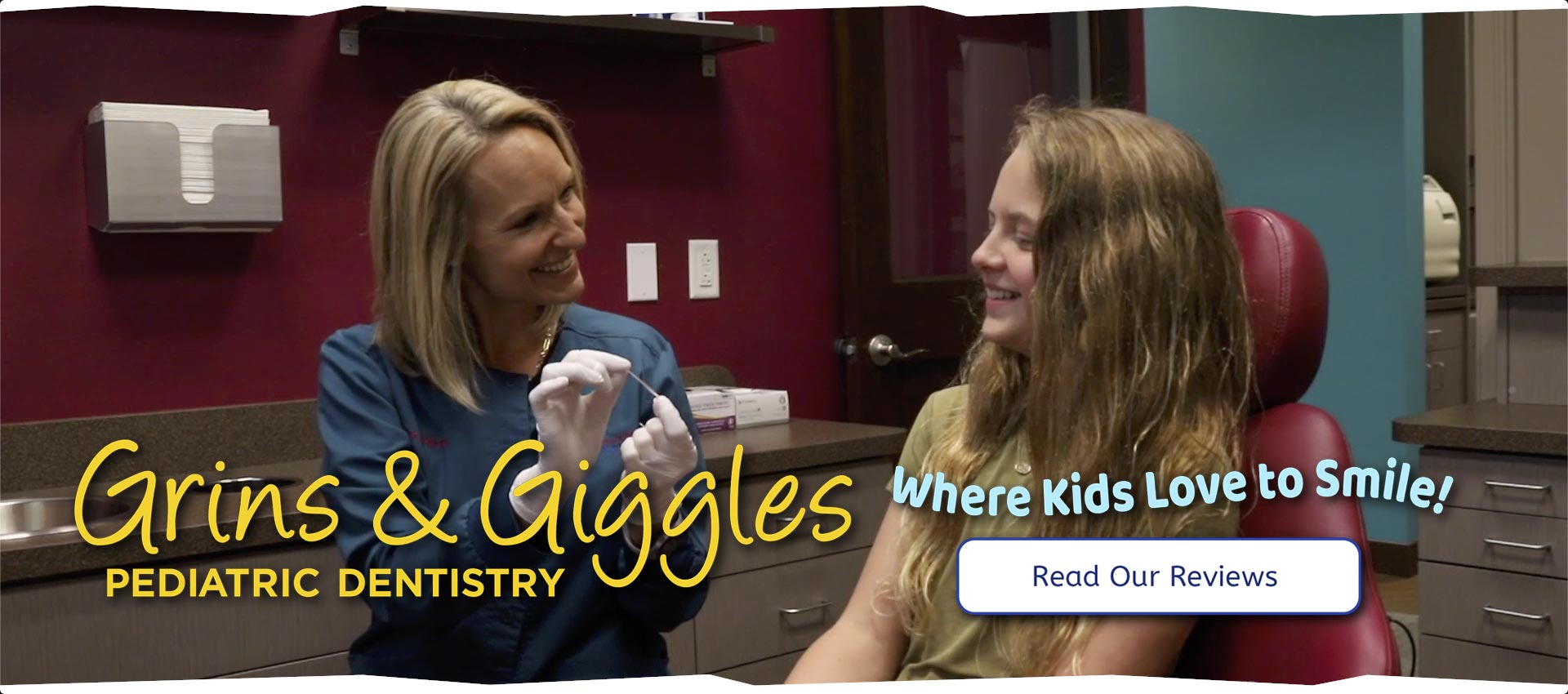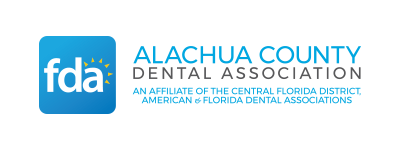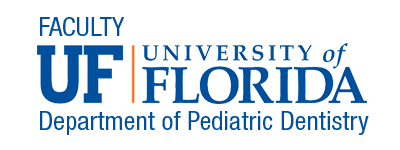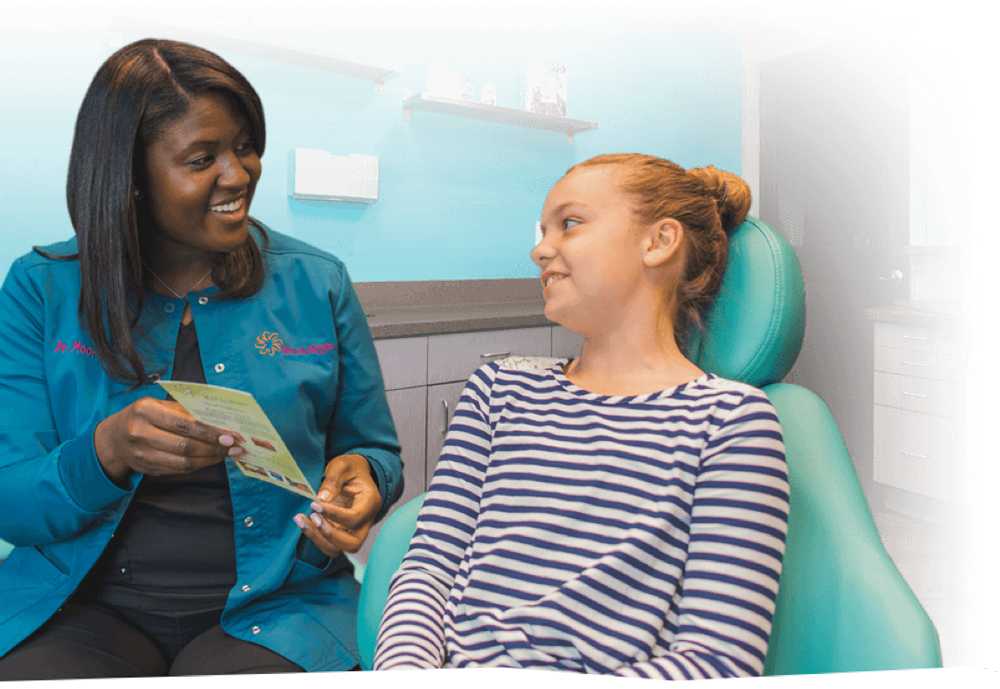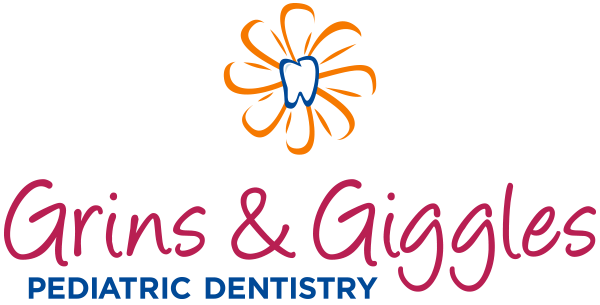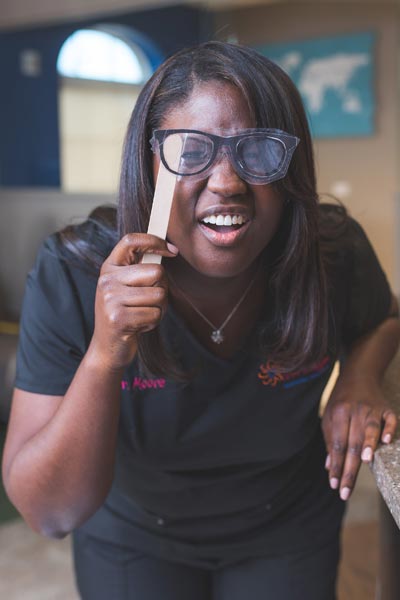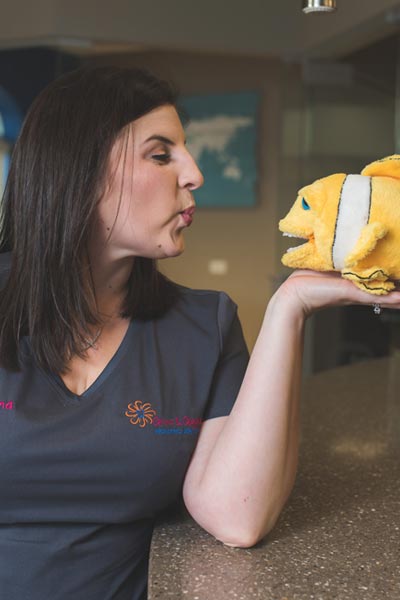Why Should I Visit a Pediatric Dentist?
With two to three additional years of specialized training
after dental school, our dentists are dedicated to providing
your children the best care. From infancy through the
teenage years, we have the expertise to give not only a
great experience to kids, but great care.

Cleanings
Learn More
We recommend a complete dental exam, a professional cleaning,
and a topical fluoride application at 2 to 3 yrs of age.
During this visit we allow extra time for your child to become
acquainted with our staff and to inspect our facilities. By
proceeding at a reasonable pace and explaining procedures in
age appropriate terminology, most fears and anxieties are
eliminated.
We evaluate your child's brushing skills and correct any
deficiencies. X-rays are not a routine part of our exam, and
are only administered when further information is necessary to
complete an accurate diagnosis.

Digital X-Rays
Learn More
The American Academy of Pediatric Dentistry recommends
radiographs and examinations every six months for children
with a high risk of tooth decay. On average, most pediatric
dentists request radiographs approximately once a year.
Approximately every 3 years, it is a good idea to obtain a
complete set of radiographs, either a panoramic and bitewings
or periapicals and bitewings.
Pediatric dentists are particularly careful to minimize the
exposure of their patients to radiation. With contemporary
safeguards, the amount of radiation received in a dental X-ray
examination is extremely small. The risk is negligible. In
fact, the dental radiographs represent a far smaller risk than
an undetected and untreated dental problem. Lead body aprons
and shields will protect your child. Today’s equipment filters
out unnecessary x-rays and restricts the x-ray beam to the
area of interest. High-speed film and proper shielding assure
that your child receives a minimal amount of radiation
exposure.

Laser Dentistry
Learn More
Laser dentistry is a highly-effective, gentle way to treat gum
disease, remove bacteria, and re-contour gum lines. Laser
dentistry is a more comfortable, accurate way to produce
excellent results.

Pulp Therapy
Learn More
Dental caries (cavities) and traumatic injury are the main
reasons for a tooth to require pulp therapy. Pulp therapy is
often referred to as a "nerve treatment", "children's root
canal", "pulpectomy" or "pulpotomy". The two common forms of
pulp therapy in children's teeth are the pulpotomy and
pulpectomy.
A pulpotomy removes the diseased pulp tissue within the crown
portion of the tooth. Next, an agent is placed to prevent
bacterial growth and to calm the remaining nerve tissue. This
is followed by a final restoration (usually a stainless steel
crown).
A pulpectomy is required when the entire pulp is involved
(into the root canal(s) of the tooth). During this treatment,
the diseased pulp tissue is completely removed from both the
crown and root. The canals are cleansed, disinfected and, in
the case of primary teeth, filled with a resorbable material.
Then, a final restoration is placed. A permanent tooth would
be filled with a non-resorbing material.

Sterilization
Learn More
We offer advanced instrument sterilization, high-level
disinfection, and cleaning technologies to help raise the
standard of care for our patients by providing by protecting
children against three main sources of infection: medical
devices, the environment, and human contact.

Dental Emergencies
Learn More
Toothache: Clean the area of the affected tooth. Rinse the
mouth thoroughly with warm water or use dental floss to
dislodge any food that may be impacted. If the pain still
exists, contact your child's dentist. Do not place aspirin or
heat on the gum or on the aching tooth. If the face is
swollen, apply cold compresses and contact your dentist
immediately.
Cut or Bitten Tongue, Lip or Cheek: Apply ice to injured areas
to help control swelling. If there is bleeding, apply firm but
gentle pressure with a gauze or cloth. If bleeding cannot be
controlled by simple pressure, call a doctor or visit the
hospital emergency room.
Knocked Out Permanent Tooth: If possible, find the tooth.
Handle it by the crown, not by the root. You may rinse the
tooth with water only. DO NOT clean with soap, scrub or handle
the tooth unnecessarily. Inspect the tooth for fractures. If
it is sound, try to reinsert it in the socket. Have the
patient hold the tooth in place by biting on a gauze. If you
cannot reinsert the tooth, transport the tooth in a cup
containing the patient’s saliva or milk. If the patient is old
enough, the tooth may also be carried in the patient’s mouth
(beside the cheek). The patient must see a dentist
IMMEDIATELY! Time is a critical factor in saving the tooth.
Knocked Out Baby Tooth: Contact your pediatric dentist during
business hours. This is not usually an emergency, and in most
cases, no treatment is necessary.
Chipped or Fractured Permanent Tooth: Contact your pediatric
dentist immediately. Quick action can save the tooth, prevent
infection and reduce the need for extensive dental treatment.
Rinse the mouth with water and apply cold compresses to reduce
swelling. If possible, locate and save any broken tooth
fragments and bring them with you to the dentist.
Chipped or Fractured Baby Tooth: Contact your pediatric
dentist.
Severe Blow to the Head: Take your child to the nearest
hospital emergency room immediately.
Possible Broken or Fractured Jaw: Keep the jaw from moving and
take your child to the nearest hospital emergency room.

Thumb Sucking
Learn More
Thumb sucking that persists beyond the eruption of the
permanent teeth can cause problems with the proper growth of
the mouth and tooth alignment. How intensely a child sucks on
fingers or thumbs will determine whether or not dental
problems may result. Children who rest their thumbs passively
in their mouths are less likely to have difficulty than those
who vigorously suck their thumbs.
Pacifiers are no substitute for thumb sucking. They can affect
the teeth essentially the same way as sucking fingers and
thumbs. However, use of the pacifier can be controlled and
modified more easily than the thumb or finger habit. If you
have concerns about thumb sucking or use of a pacifier,
consult your pediatric dentist.

What Toothpaste?
Learn More
Tooth brushing is one of the most important tasks for good
oral health. Many toothpastes, and/or tooth polishes, however,
can damage young smiles. They contain harsh abrasives, which
can wear away young tooth enamel. When looking for a
toothpaste for your child, make sure to pick one that is
recommended by the American Dental Association as shown on the
box and tube. These toothpastes have undergone testing to
insure they are safe to use.
Remember, children should spit out toothpaste after brushing
to avoid getting too much fluoride. If too much fluoride is
ingested, a condition known as fluorosis can occur. If your
child is too young or unable to spit out toothpaste, consider
providing them with a fluoride free toothpaste, using no
toothpaste, or using only a "pea size" amount of toothpaste.

Orthodontics
Learn More
Developing malocclusions, or bad bites, can be recognized as
early as 2-3 years of age. Often, early steps can be taken to
reduce the need for major orthodontic treatment at a later
age.
Stage I – Early Treatment: This period of treatment
encompasses ages 2 to 6 years. At this young age, we are
concerned with underdeveloped dental arches, the premature
loss of primary teeth, and harmful habits such as finger or
thumb sucking. Treatment initiated in this stage of
development is often very successful and many times, though
not always, can eliminate the need for future
orthodontic/orthopedic treatment.
Stage II – Mixed Dentition: This period covers the ages of 6
to 12 years, with the eruption of the permanent incisor
(front) teeth and 6 year molars. Treatment concerns deal with
jaw malrelationships and dental realignment problems. This is
an excellent stage to start treatment, when indicated, as your
child’s hard and soft tissues are usually very responsive to
orthodontic or orthopedic forces.
Stage III – Adolescent Dentition: This stage deals with the
permanent teeth and the development of the final bite
relationship.



